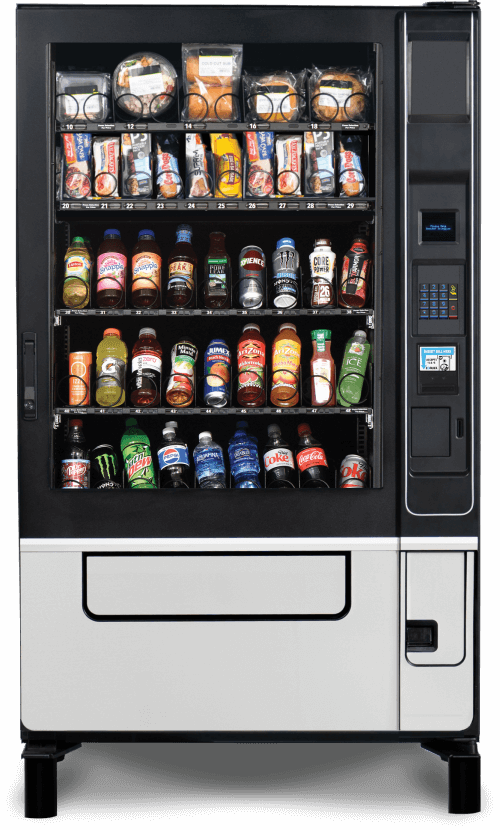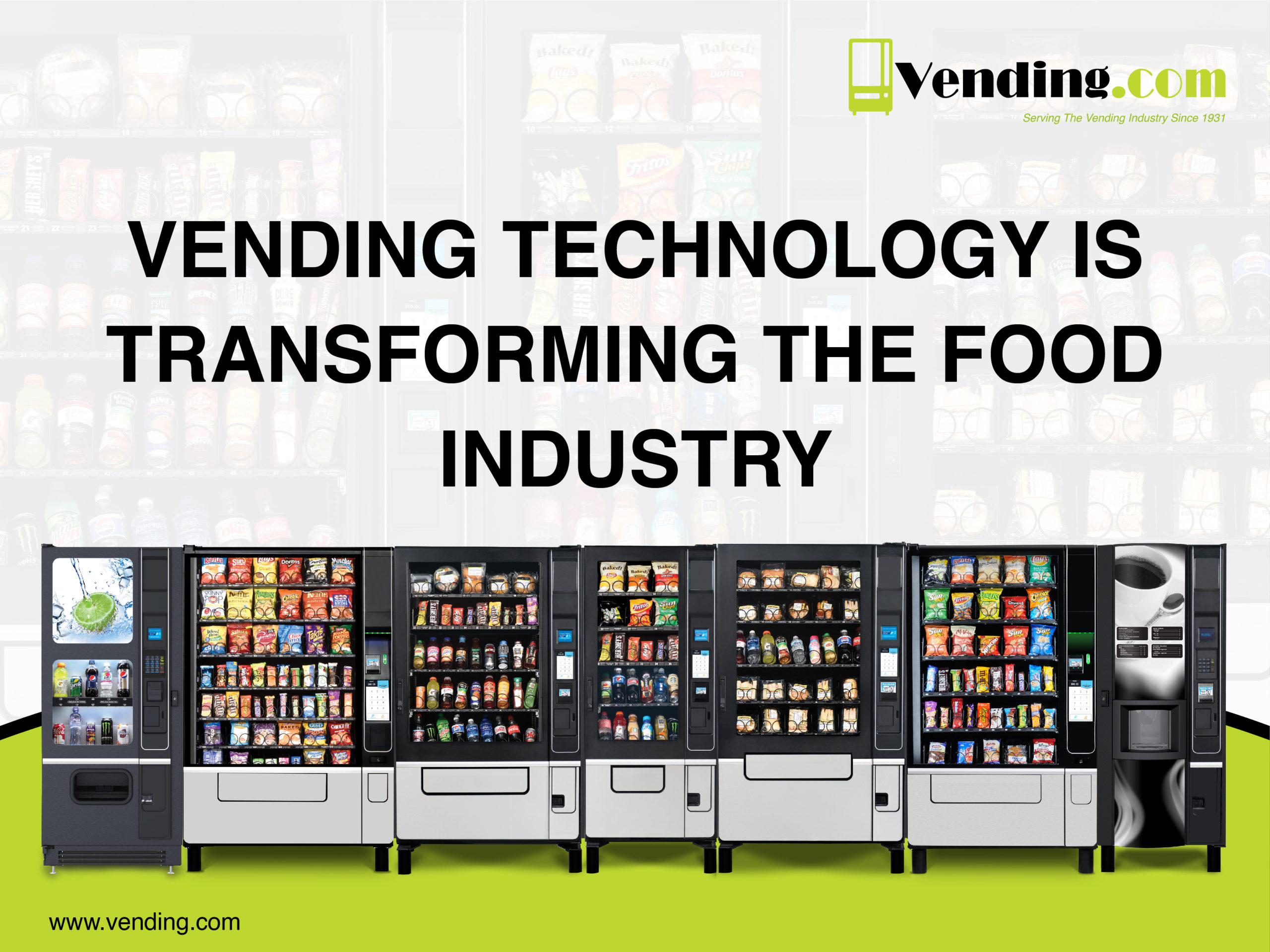Introduction
Vending machines have been serving food products to consumers for more than a century. Today, more than $30 billion worth of food and beverages are bought from vending machines all over the country each year. They form an integral part of the food supply chain.
Like all electrical and electronic equipment, vending machines are embracing the growth of technology. Cloud computing, the Internet of Things, Electronic Payment Interfaces like Greenlite Vending, and Graphical Human-Machine Interfaces are some examples of the latest technology used in modern vending machines Such pieces of technology have created new possibilities in unmanned food retail. They have improved efficiencies, reduced waste, enhanced accountability and delivered novel experiences for the end-user. Let us explore how technology in vending is transforming the food industry and its trends.
Vending in the Food Industry
Thomas Adams installed machines selling sugar-coated chewing gum balls in New York in the late 19th century. Vending machines have since played a significant role in food industry trends. Today they sell everything from packaged potato chips to freshly cooked pizza. Disregarding a few fringe variants, the majority of food products that flow through the vending channel are of four broad types:
Snacks and Beverages – This is the largest contributor to the share of food products sold through vending machines in the United States. It includes cold beverages (23%), packaged snacks (15.5%), and candy & confectionery (18.3%). This amounts to about $17.6 billion in annual sales in the U.S. They are mostly convenience sales and impulse purchases.
Frozen Food & Cold Storage Products – This category is the second-largest by sales. It consists of ice cream (1.9%), frozen food (5.3%), and Healthy & Fresh Food (8.2%). Such products usually have a short shelf life. Hence the vending machines selling them are limited to specific areas like grocery stores, micro-markets or other sites where consumers come to buy food supplies. Together, they contribute to about $4.9 billion in annual sales in the U.S.
Hot Beverages – The hot beverage vending took a tremendous beating during the COVID-19 pandemic and the following lockdown measures of several state governments. But since 2021, the industry has been bouncing back hard. Today, hot beverage vending machines contribute to approximately 3.8% of total sales, equaling about $1.2 billion annually.
Others – All other categories have been grouped into this category. This includes fresh pizzas, hot food, soup, ready meat, and french fries. This segment contributes to $4.2 billion in annual sales in the U.S. Some reports claim that this is the fastest-growing of all categories of food sold through vending machines.
Benefits of Vending Technology for the Food Industry
There are several participants in the food industry. Some of them are a part of the food products’ value stream. They participate in the production, logistics and consumption of food. This includes the business that produces and packages food, catering or food services providers, wholesalers and retailers. When vending machines are involved in the process, there are more participants. They are vending machine operators, owners of locations where the vending machines are placed and sources of food products.
Economic Value Added for all Stakeholders: The sale of food products through vending machines creates revenue for vending machine operators and location owners. Considering that a massive part of the sales on vending machines are discretionary and impulse purchases, they increase the total sales volume in the food industry. This helps all the participants in this industry grow their revenue.
Vending in Food Security: It is estimated that about 3.1 million Americans suffer from acute food insecurity. A big part of it is because of food deserts. This is a crisis driven by the lack of accessibility to food where it is required. Vending machines can become satellite stores for store owners, which can be replenished regularly. This helps extend the range of service of the grocery or departmental stores without having to incur expensive capital. The latest vending machines have onboard or cloud-enabled inventory management software. This helps the store owners to track consumption and replace the stock in these remotely installed machines without having to visit them for frequent inspection. When all impediments are removed, store owners are motivated to install more vending machines that give access to processed and fresh food. This can help improve food security by providing convenient access to essential nutrition anywhere and anytime.
Vending for Sustainability: As discussed earlier, vending machines with inventory management help track food consumption. Owners can now stock the right amount of food in their machines by monitoring stock levels. This minimizes food waste.
Moreover, new-age machines use energy-efficient cooling systems like R290-based refrigeration units. They are easier to deploy than replacing large cooling units of big stores or markets. This makes vending machines an energy-efficient supplement to stores wherever possible.
Dealing with catastrophic disruptions: If there is anything that the COVID-19 pandemic has taught us in 2020 and 2021, we depend on a fragile supply chain for our daily needs. The world is still reeling from its after-effects. Vending machines can help address the last-mile supply chain issues by providing contactless access to essential food supplies. Some machines have inherent UV-based irradiation to sanitize machine interfaces and supplies.
Emerging Technology in Food Vending
Recent advances in electronics, software and computing have revolutionized the vending industry. The benefits of this technological progress have had a positive impact on the food industry and its trends. Some of them are discussed below.
Contamination Prevention: UV sanitization has helped vending machines not only sanitize the touchpoints where consumers interact with them. They now can sanitize the merchandise they sell. UVend Technology makes high-touch machine surfaces safer by destroying or inactivating some of the most common viruses, bacteria, and highly beneficial during COVID-19.
Hot Food Vending: Energy-efficient heating systems combined with precision robotics have helped turn vending machines into kitchens. This is expected to widen the range of products and services offered through vending machines.
Sustainability & Eco-Friendliness: Modern cooling systems, prevention of waste using inventory management platforms and other environmentally responsible features make vending machines a compelling retail channel in food industry trends.
Conclusion:
The food industry has been one of the earliest beneficiaries of vending technology. All stakeholders in the food industry benefit from the use of vending machines as a channel for last-mile retail. The recent developments in technology have only enhanced the benefits of vending machines.
Vending.com has been a part of the vending industry for over 90 years. Strong investments in research and development on cutting-edge technology have helped Vending.com set the pace for innovations in the vending industry. If you are looking to set up a vending business or grow your current vending business, talk to us at 1-855-929-1042 or visit our website.

